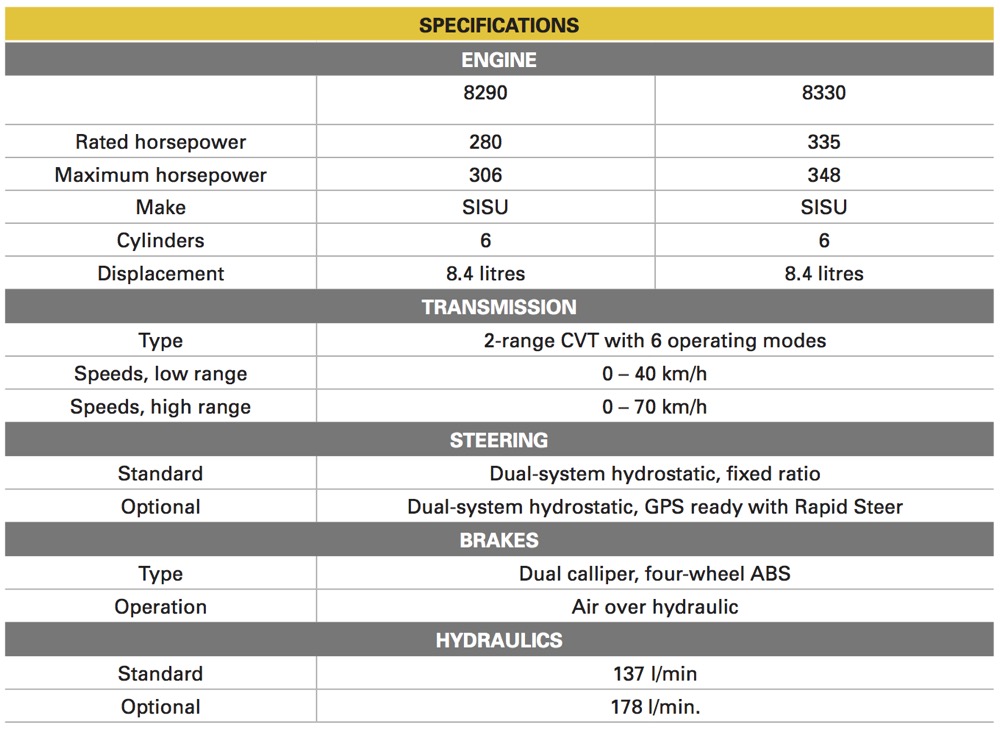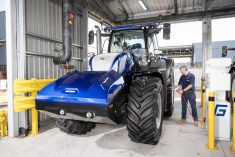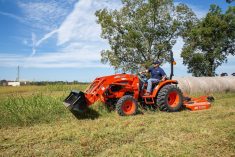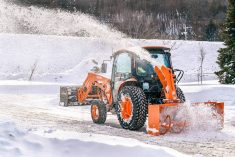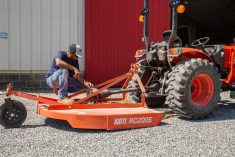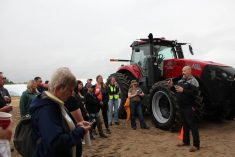JCB’s chief innovation and growth officer Tim Burnhope was beaming as he stood on stage in a theatre at the company’s Rocester England World Headquarters. He was there to introduce JCB’s newest ag machines to members of the farm media invited there from most of the countries the brand sells into.
The biggest news Burnhope had up his sleeve was the company has given its 8000 Series Fastracs a complete redesign. Previously, these models had a more conventional FWA tractor design, but they’ve now reverted to a nearly equal-wheeled configuration. The equal-wheeled concept with mid-mounted cab and rear deck used on the current, smaller 4000 Series have been signature features that defined the unique Fastrac since its introduction 25 years ago. That’s when JCB genetically modified the conventional tractor by adding some truck DNA to it.
- Read more: The evolution of JCB’s Fastrac
JCB has also made the new 8000 its flagship Series. Its two new models push up the maximum engine horsepower ratings with 280 in the 8290 and 335 in the 8330. And the tractors keep that 70 km/h roading ability along with the small rear deck that allows them to carry a sprayer tank and do double duty as an SP sprayer. Hitting that new horsepower mark while maintaining multi-function ability make the 8000 Series “a brand new chapter” in Fastrac development, according to JCB executives.

“The Fastrac is as capable in the field as it is on the road,” said Burnhope, referring to the 8000’s overall features package. And that return to an (almost) equal-wheel design with a boost in available horsepower make the new tractors a viable option for many western Canadian farmers looking for a primary field tractor.
Marketing staff not only revealed the new 8000s in spectacular fashion at their head office, they gave us a chance to take them into the field and see what the tractors could do. According to Bruce Mustard, JCB’s North American Fastrac sales manager, the company has had a couple of early production models in use on U.S. dairy farms for several months doing manure hauling and a variety of other tasks, and they continue to prove their worth at those duties. But getting farmers to consider them as primary field tractors is now a focus for the brand.

So what’s under the skin on these tractors, and why are they worthy of becoming a primary field tractor?
The details
The engine and transmissions are from AGCO, so some parts availability stretches well beyond dedicated JCB dealers. An 8.4 litre SISU (AGCOPower) diesel mates to a programmable Fendt CVT transmission. That allows the engine management system to run the tractor at the lowest possible r.p.m. during field operations (or it can be set for other priorities like field speed) and keep torque where it needs to be while minimizing fuel consumption, even in changing field conditions. The Activ Traction feature monitors wheel slip and throttles down the engine until traction returns, then the tractor picks up ground speed again.
Full chassis suspension not only keeps the tractor stable at 70 km/h. on the road, but improves traction in the field, reducing the need for fuel-eating ballast. But if you really want to ramp up the tractor’s ability to pull, a single, rear deck-mounted weight can be lifted on and off with a front-end loader, which makes it one of the few ballast options on the market today that is relatively easy to add and remove on the farm.

The new 8000s keep the air-over-hydraulic Fastrac braking system that allows them to pull truck trailers, mating to trailer brakes with rear air line connections. Combine that with the tractors’ four-wheel disc brakes and ABS and you get a machine that can pull a lot of weight down the road very fast and very safely, something you don’t get by hitching a regular high-horsepower tractor to a semi trailer and just caging the trailer brakes to allow it to move.
The tractors also abandon the previous mechanical steering linkage for a new, hydrostatic dual-steer system. Two independent fluid circuits provide a fail safe system in the event of a failure in one or the other, and optional Rapid Steer changes the affect of steering wheel input based on ground speed, heightening sensitivity for low field speeds and reducing it for high road speeds.

For a virtual test drive of the 8330, visit our e-QuipTV videos page.



